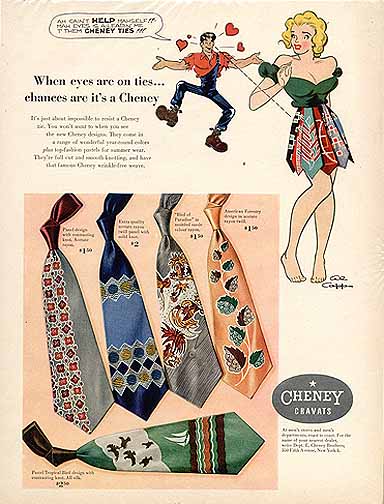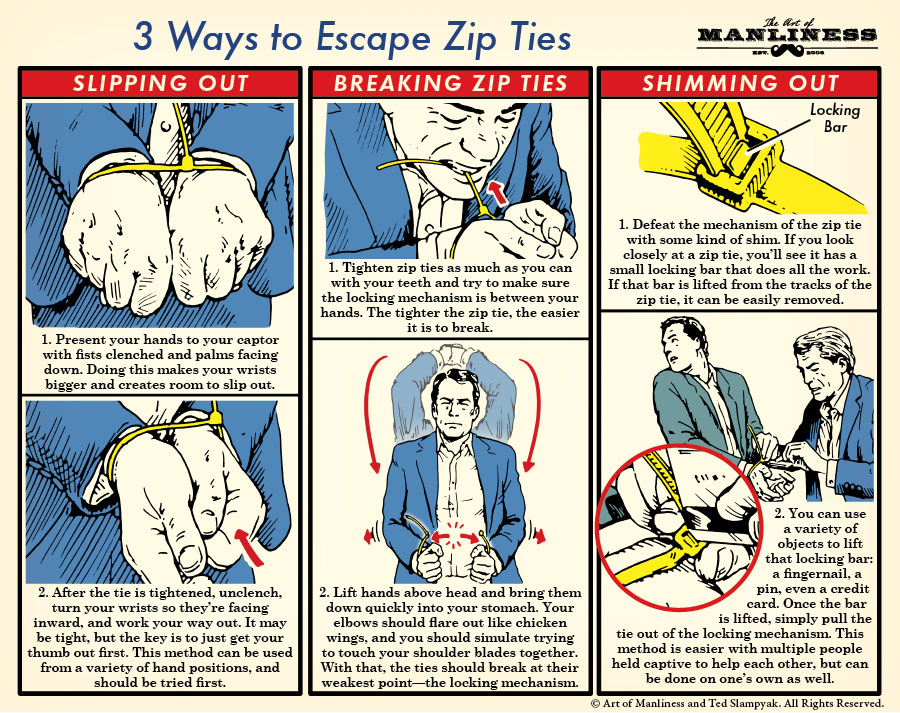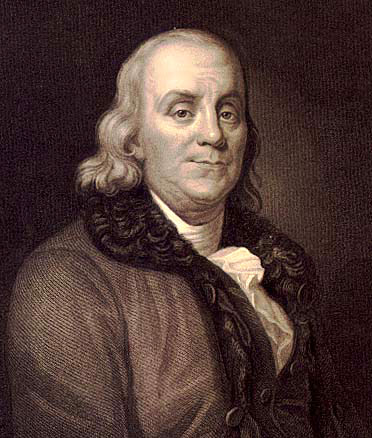
Have you ever been the beneficiary of an introduction that changed your life?
Maybe you got a new job because someone introduced you to the owner of a business. Or maybe you got a mentor, or a new client/customer that resulted in thousands of dollars in revenue to your own company.
If you have benefited from a great introduction, then you know what a powerful impact this one simple tool can make.
And you may be thinking that the key to success is finding a way to get your friends and contacts to introduce you to their wealthy, powerful friends, right?
If that’s what you’re thinking, then let’s stop right here. No one gets ahead by waiting at home for the phone to ring. And nothing is less attractive than someone who wants to get, but is unwilling to give.
In other words, if you want to be introduced, then you need to become an introducer. Success comes to those who take initiative. Think proactively about which of your current friends, colleagues, clients, customers, and other connections would benefit from meeting others in your network, then put them together. Start introducing people you know to other people you know and you’ll find others will do the same for you.
AoM has previously tackled the etiquette of making in-person introductions. That post demonstrated how to show respect and deference when introducing business associates of various ranks face-to-face.
In this post, I’m going to share how you can use virtual introductions as a tool for helping others and for advancing your career or business. As you’ll see, principles of gentlemanly etiquette still apply, even if you’re not in the same room together.
I’ll also share specific examples of how introductions I or others have made have led to new friendships and even brand new businesses, added millions of dollars in revenue to one company’s bottom line, and formed new business collaborations.
But first, let’s examine why introductions are so powerful and why they can benefit you as much as they can benefit those you introduce — when it’s done the right way.
The Power of Making Introductions and Strengthening Weak Ties

In the recent book Give and Take, Wharton professor Adam Grant profiles Adam Rifkin, a Silicon Valley-based entrepreneur who has made three introductions a day for nearly a decade. Rifkin’s efforts have led to a dozen business partnerships, hundreds of jobs, and the creation of numerous companies.
Just as importantly, Rifkin’s habit of making introductions has contributed to his own personal success. Even though he is inherently shy, Rifkin is phenomenally well-connected, which led Fortune to crown him as the best networker of 2011. Thanks in part to that connectedness, his startups, including his most recent company PandaWhale, have received high-profile venture capital funding and been profiled by TechCrunch.
Give and Take’s central premise, supported by decades of academic and social research, is that “givers” — people who are inclined to give to others — are more likely to be successful in business and in life than “takers” — those whose first instinct is to think of their own self-interest. Grant argues that introductions are one of the most powerful tools givers can use to strengthen their weak ties within their network, a concept Malcolm Gladwell introduced to a wide audience in The Tipping Point.
Gladwell argued that when it comes to finding out new information, weak ties — people that we know peripherally — are more important than strong ties, because strong ties are the people you already know well and talk to frequently. A strong tie probably knows a lot of the same people and information you already know. Because of this, you tend to learn more from your weak ties than you do from your strong ties.
And yet few people make introductions regularly, perhaps out of a mistaken belief in limited returns, or due to confusion about how to go about doing introductions effectively.
Let’s nip that in the bud, shall we? In a moment, I’m going to break down five simple steps you can use as a framework for making introductions.
But just in case I still haven’t convinced you that you should be making introductions, let’s take a look at a perfect example of someone who parlayed a habit for doing so into a very successful career, and evaluate why introductions are so powerful.
How Pat Walsh Built a Career One Introduction at a Time

John and Dotty
Pat Walsh had a long career with Merrill Lynch. The kind of career no one seems to have anymore — 32 years with the same company.
During that time, Walsh made a habit of introducing people in his network to one another any chance he got. “I really enjoyed making connections, matching people up,” says Walsh. “If I’m impressed with someone, I’ll introduce them to someone else I know.” He introduced job candidates to hiring managers, and promising young employees to executives.
“I would introduce people all the time,” says Walsh. “We were at a restaurant in Princeton, New Jersey one time, and I was really impressed with our waiter. He was a very mature and well spoken guy.” Walsh introduced him to a colleague at Merrill Lynch. They hit it off. “Within a month, he had gotten hired. It worked out really well.”
Walsh didn’t make introductions because he expected it to pay off professionally. But that ended up being a byproduct. Walsh’s habit of introducing people led to promotion after promotion. “I started as a broker, then went into management training and then managed three branch offices,” he says.
One particular introduction paid off in an unexpected way when Walsh’s friend, John, stopped by the office. “There was this young, pretty secretary named Dotty who was working there at the time,” says Walsh. “I thought she was very polished, a terrific person. So I introduced them.” A week later, John came back in and took Dotty to lunch. A year later they were married.
At the peak of his career, Walsh served as head of global human resources for the company. Typical of a good matchmaker, he demurs when asked if his habit of making introductions led to his success with the company. “I didn’t really look at introductions as a means of getting ahead,” says Walsh. “I looked more for ‘win, win’ opportunities when I met people who I thought might be terrific at the company.”
Why You Should Be Doing Introductions

If Walsh’s story isn’t convincing enough, let’s take a deeper look at reasons why you should be doing introductions today:
Everybody wins. It’s rare there’s a “win-win-win,” but if anything qualifies, it’s making introductions (when they’re done in the right way!). The people you introduce benefit in that they’ve just met someone new. Your recipients are grateful to you and will probably repay the favor one day. And everyone benefits from a more connected world where resources and professionals have stronger ties.
Introductions can lead to financial rewards. Chris Johnson has fueled a multi-million dollar business by introducing others. The co-founder of Simplifilm, a film production company specializing in working with authors, Johnson attributes a good chunk of his company’s success to his habit of making at least one introduction per day. “I’m kind of a binge networker,” acknowledges Johnson. “I probably average 250 introductions a year, but I probably get to it two times a week. I might also introduce three people to one client.”
And the result? “I’ve created many relationships by introductions.” These relationships have certainly paid off. “Introductions are my #2 source of new business, and we did about $1 million in revenue last year. We expect to double it this year,” says Johnson.
It’s unique, and will help you stand out. It is rare these days for people to take the time to make introductions, which is why it can be very memorable. Johnson says making introductions helps you stand out in a sea of competition. When you make introductions, “people remember you,” says Johnson. “It’s a way to tell two people three things: I like you both. I am thinking of you. I vouch for you.”
Introductions help you strengthen your weak ties. As Gladwell demonstrated in The Tipping Point, there is great power in your weak ties. You can use introductions as a tool for reconnecting with and strengthening relationships with these weak ties.
Rather than sending a lame “Just checking in!” email to a weak tie you haven’t spoken to in months or years, use the opportunity to introduce your weak tie to someone else who they might enjoy meeting. It’s a much more powerful way to reconnect, and your weak tie will be more likely to help you in return.
Society as a whole benefits. Apple computer wouldn’t exist if Bill Fernandez hadn’t introduced Steve Jobs to Steve Wozniak. The Beatles would never have recorded a note if Ivan Vaughan hadn’t introduced Paul McCartney to John Lennon.
And where would we be if someone hadn’t introduced Daryl Hall to John Oates? I don’t know about you, but I can’t go for that. No can do.
How to Make Introductions in 5 Simple Steps

Now I want to outline a framework you can use for making introductions on an ongoing basis. Using just five very simple and easy steps, you can make doing introductions a habit, and both you and your connections will benefit.
Step 1: Identify Your High-Value Contacts
Doing introductions can be time consuming, so it’s valuable to focus on people who matter to you. In other words, it’s best to spend your time connecting people who you would like to deepen your relationship with and who are going to greatly benefit from your introductions.
For me, there are two types of people who automatically go on my personal list of high-value contacts: my clients, and anyone who has been on my podcast. I owe a debt to anyone who has hired me, or given me 30-45 minutes out of their day to be interviewed for my podcast, and therefore I am always trying to think of ways to repay the favor by introducing them to someone else.
Since just about everyone I’ve interviewed on my podcast is kinda a bigger deal than I am, this is a great way to follow up and deepen the relationship after having forged an initial relationship.
Step 2: Be on the Lookout for Introduction Opportunities
The second step is to always be alert for opportunities to make an introduction. Chris Johnson says this doesn’t mean he has to constantly rack his brain for people to introduce, “It’s a reflex. I try hard to remember my network, and remember what they do. I try hard to ask people if there’s any introduction I can make.”
You don’t have to have a complex system. It just takes a little forethought and time. “I don’t have anything like ‘Johnson’s laws of intros,’ says Johnson. “I just try hard to do it once a day.”
In addition, you have to make sure the value in the introduction is reciprocal. If I went around introducing every rabid Jets fan who also happens to love social media to Gary Vaynerchuk, I wouldn’t be giving Gary Vee much value. So it’s better to introduce two people who can provide equal value to one another.
When in doubt, check first to see if your introduction recipients actually want the introduction. They may not. If you don’t check first, you may just create an unwanted, drive-by introduction that burns bridges rather than builds them. The last thing you want is your introduction recipients feeling burdened rather than benefited by the introduction sitting in their inbox, even if it was unintentional.
You wouldn’t stop by a buddy’s house unannounced with someone you want to introduce them to and leave the person sitting on the couch in the living room, so don’t do the same with their inbox.
Step 3: Use Tools to Make Introductions a Regular Habit
Like anything, in order to make a pattern stick, you have to make it a habit.
To make introducing people a habit, I use a couple of simple tools:
A Calendar
One of the most powerful tools for creating any regular habit is the most simple: adding a repeating reminder on your calendar. Give and Take author Grant uses this approach for reconnecting with his “dormant ties” — people who you used to know, but with whom you’ve lost touch. “I added a repeating reminder to my calendar: reconnect with at least one dormant tie each month,” he wrote in The Huffington Post.
A Relationship-Management Program
I use a CRM program called Contactually for managing relationships, in part because it sends me reminders to follow up with people who I haven’t communicated with in a long time. When I receive these reminders, I then think about someone I can introduce them to. By doing so, I give them something of value and I don’t look like I’m just reconnecting for the purpose of trying to get something out of them.
Step 4: Make the Introduction Brief, Relevant, and Fun
A non-urgent introduction can quickly fall to the bottom of the priority list, especially if the people you are introducing are busy, successful professionals. So you have to explain clearly why your introduction matters.
That’s why I try to make my introductions brief and to the point. I want to be respectful of others’ time, which is why I aim to clearly articulate anything the two people I am introducing have in common.
Be wary when introducing very successful, very busy people who likely are the recipient of many introductions of dubious value. The last thing you want to do is create awkwardness by introducing a very successful and very busy person to someone who provides little value in return.
I used this approach when I introduced Andrew Warner, founder of the video podcast Mixergy, to Susan RoAne, the bestselling author of How to Work a Room.
I had interviewed both Andrew and Susan for my own podcast, and I thought Susan would be a good fit for Mixergy.
Now, I could have very easily talked myself out of making this introduction. After all, Andrew has a team of producers and guest bookers who handle booking his guests. Why would he even need me to make an introduction?
The same could be said for Susan. As a bestselling author and in-demand keynote speaker who specializes in talking about mingling, she is incredibly well-connected.
Who am I to be so presumptuous as to introduce those two?
But even well-connected people don’t know everyone on the planet, and Andrew needs a steady stream of quality guests.
So here was my email to Andrew and his team:

I turns out my instincts were right on. Not only had Andrew read Susan’s book, but it turns out he was a big fan.
I immediately did an introduction:

As you can see, I kept the introduction short and made it a little lighthearted.
AoM’s own resident style guru is another expert in the art of the gentlemanly virtual introduction. I wouldn’t be writing for AoM if I hadn’t been the beneficiary of Antonio introducing me to Brett and Kate. Here’s Antonio’s original email:

Antonio’s email was short, to the point, and relevant. He even went the extra step of reporting that he had read through my free ebook and that it was of high quality. That’s why it was a well-executed introduction.
Step 5: Follow Up Later
Finally, follow up with the people you introduce a few weeks or months later to be sure they connected. Oftentimes people get busy and they simply forget to follow through on the introduction you made.
Introductions may simply get lost, or overlooked. That’s why it’s best to have a system for tracking the introductions you do.
Recently, I followed up on one introduction I had made 18 months ago. It turned out the two guys I had introduced had hit it off so well, they had launched a new marketing consulting business together.
Get Started Making Introductions Today

When it comes to making introductions, you have to play the long game. You can’t expect introductions to immediately turn into money in your pocket. As both Walsh and Johnson demonstrated, introductions will pay off if you do it consistently.
If I look back at my career, nearly every job I ever had came thanks to an introduction. From waiting tables at a BBQ restaurant during high school to working at the White House, someone stuck their neck out for me and introduced me. Even today, the majority of my clients come via an introduction from a mutual acquaintance or friend.
That’s why I believe giving back by making introductions is so important. Not simply because it is financially rewarding for all involved, but because a small investment of your time can make a massive difference.
Your introduction can literally alter the course of a person’s life.
Remember John and Dotty, the couple that Pat Walsh introduced who later got married? Curious if the marriage worked out?
Turns out it worked quite well. John and Dotty have been married for 43 years.
How do I know?
They’re my parents.
Here they are, after 43 years of marriage, with my son, Mason, who was their first grandson:

I wouldn’t be here today if Pat Walsh hadn’t taken the time to make an introduction. Mason wouldn’t be here today if Pat Walsh hadn’t made that introduction.
We’re both testaments to the power of introductions.
Thanks, Pat.
Listen to our podcast with John for more networking tips:
_________________________________________________
John Corcoran is a former Clinton White House Writer, creator of SmartBusinessRevolution.com, and yes, Mason really is that adorable. You can download his free 52-page guide How to Increase Your Income in 14 Days By Building Relationships with VIPs, even If You Hate Networking.






